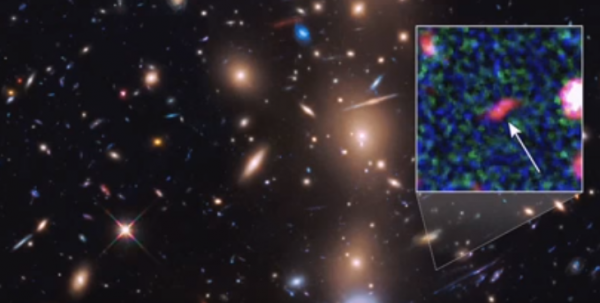By Iesha Javed, | October 08, 2016

Astronomers using NASA’s Hubble and Spitzer Telescopes have spotted a faint galaxy near our solar system.
Scientists have discovered a super-faint galaxy which is one of the hundreds of galaxies orbiting our solar system. The galaxy named 'Virgo I' is currently occupying the imaginations of space scientists across the world.
Like Us on Facebook
Scientists, who believe that large galaxies like the Milky Way are formed when smaller galaxies crash into each other, got a boost when they discovered a super-faint galaxy that exists as a satellite of the Milky Way.
The discovery of Virgo I, one of the faintest galaxies ever seen, implies that satellite galaxies are leftovers of the ones that merged with ours. So far, stargazers have discovered only around 50 satellite galaxies.
A team led by Daisuke Homma and Masashi Chiba of Tohoku University in Sendai, Japan, searched the sky for these orbiting galaxies with a giant 8.2-metre Subaru Telescope fitted with a new camera in Hawaii. It was during their search that they discovered the 'Virgo I.'
"Virgo I is just a few hundred light years across, which nonetheless indicates it is a galaxy. It might be the faintest galaxy," Chiba said. "It emits about half as much light as Segue 1, another satellite of the Milky Way and the former faintest-galaxy record-holder. A single bright star in our galaxy outshines all of Virgo I's stars put together."
Vasily Belokurov of the University of Cambridge, whose team discovered Segue 1 in 2006, added that "A star cluster this dim would be even smaller. Still, the galaxy's luminosity is somewhat uncertain, because astronomers can only see its brightest stars."
"All these luminosities should be taken with a great pinch of salt, so I would not really play this game of which one is the faintest," he added.
Erik Tollerud of the Space Telescope Science Institute in Baltimore, Maryland described satellite galaxies as "tiny little puny things." He said that "It continues to be interesting how faint you can go and still be a galaxy. The new galaxy radiates so little light because it has so few stars, which give off only about 180 times as much light as the sun."
-
Use of Coronavirus Pandemic Drones Raises Privacy Concerns: Drones Spread Fear, Local Officials Say

-
Coronavirus Hampers The Delivery Of Lockheed Martin F-35 Stealth Fighters For 2020

-
Instagram Speeds Up Plans to Add Account Memorialization Feature Due to COVID-19 Deaths

-
NASA: Perseverance Plans to Bring 'Mars Rock' to Earth in 2031

-
600 Dead And 3,000 In The Hospital as Iranians Believed Drinking High-Concentrations of Alcohol Can Cure The Coronavirus

-
600 Dead And 3,000 In The Hospital as Iranians Believed Drinking High-Concentrations of Alcohol Can Cure The Coronavirus

-
COVID-19: Doctors, Nurses Use Virtual Reality to Learn New Skills in Treating Coronavirus Patients











